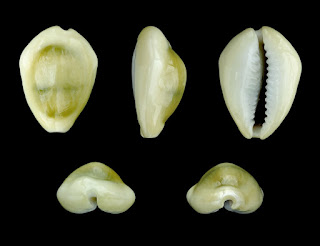A Shankh is a conch shell of ritual and religious importance in Hinduism. It is a sacred emblem of the Hindu god Vishnu. Goddess Lakshmi too is associated with the Shankh as it is believed in Hindu mythology, that during the churning of the ocean, the first conch shell that appeared was followed by goddess Lakshmi. In its earliest references, it is also mentioned as a trumpet, and it was the earliest sound producing instrument as manifestation of sound and all other elements came later. It was used in battles as a war trumpet. The sound of the Shankha symbolizes the sacred "Om" sound. In Hindu epics of Ramayana and Mahabharata, the symbol of Shankha is widely adopted and described. In Buddhism, the conch shell has been incorporated as one of the eight auspicious symbols, also called Ashtamangala.
The Sanskrit "Samkha", is usually written and pronounced in latin script as Shankh.
The vibrations and sound waves it produces when blown, purifies the air and it is believed that it balances the Chakras in the body. It is always placed on a metallic seat or tripod in the place of worship with the mouth facing in the upward direction and its tip in the east. The study of conch-shells is known as Conchology and by 1828, an instrument called 'Conchometer' was designed to measure the spiral arrangements on the shell. The Romans and the Greek credited these with mystic or occult power. Based on its direction of coiling, they are of two types.
Vamavarta. (Left turned as viewed with the aperture uppermost). Commonly found, where the shell coils expand in a clockwise spiral when viewed from the apex of the shell. In Hinduism, it is associated with Vishnu.
Dakshinavarti. The rare form where the sell coils expand in a counterclockwise spiral if viewed from the apex of the shell. It is believed to be the abode of the wealth goddess Lakshmi. The right spirals reflect the motion of the planets.
Shaligrams (ammonites) are iconographic fossil stones found the world over, however, closer to India they are found in the Gandaki River in Nepal, that once was a sea before the collusion between the Indian Plate and Eurasian Plate that began 50 million years ago. These are worshipped as representative of Hindu god Vishnu. The Shaligram has arks of a Shankh, chakra, gada and Padma arranged in this particular order. The largest and heaviest Shaligram in India is at Jagannath Temple and outside India, the ISKON temple in Scotland has the largest number of Shaligrams.
Shaligrams
Shell Money. Was a medium of exchange similar to coin money and was once commonly used in many parts of the world. It consisted of whole or partial seashells, often even worked into beads and it appeared in Americas, Asia, Africa and Australia. Usually, it was referred to as Cowry. In India, in Bengal 3840 cowries were equivalent to a rupee.
Conch or Shankh on coins or use of shells as coins is prevalent since ancient times. Numerous kingdoms and many countries have on their coin's images of a conch since ancient time and even now there are nations that depict them on their coins.
Some are as listed.
Burma, Pyu city, kingdom of Sri Ksetra, 610-835 AD, weight 11.4 gm, Obverse: Damru, five triangular ornaments above all within beaded border, Reverse: Temple Shankh, three petals around























No comments:
Post a Comment
Any inputs or feedback is welcome!